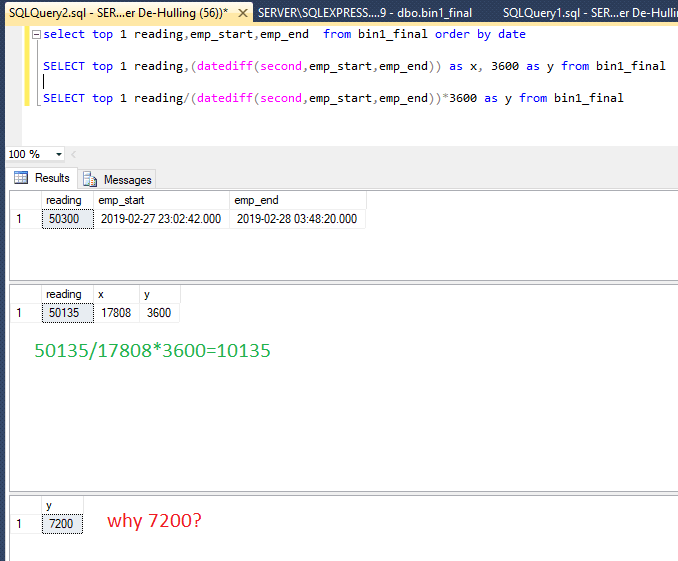TariqMehmod
Programmer
Sir while using SQLSERVER 2012 I have these codes
[pre]
select top 1 reading,emp_start,emp_end from bin1_final order by date
SELECT top 1 reading,(datediff(second,emp_start,emp_end)) as x, 3600 as y from bin1_final
SELECT top 1 (reading/(datediff(second,emp_start,emp_end))*3600) as y from bin1_final
[/pre]
The result looks like this

Please help
[pre]
select top 1 reading,emp_start,emp_end from bin1_final order by date
SELECT top 1 reading,(datediff(second,emp_start,emp_end)) as x, 3600 as y from bin1_final
SELECT top 1 (reading/(datediff(second,emp_start,emp_end))*3600) as y from bin1_final
[/pre]
The result looks like this

Please help
